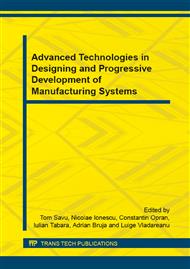p.15
p.21
p.27
p.33
p.39
p.45
p.51
p.57
p.63
A New Algorithm for the Optimization of the Design Process Using the Design Structure Matrix
Abstract:
This Design Structure Matrix is a method and a tool used to capture, analyze and optimize iterations in the design process. It has been widely used over the past two decades by researchers from both academia and industry. DSM is well suited to identify iterations in the design process. Many heuristics were developed to deal with DSM in order to reduce the number of iterations by rescheduling the tasks of the design process. These heuristics are based on a process called partitioning. These heuristics give generally an approached solution but not the optimal one. In this paper we introduce a new algorithm in order to get the exact solution of the partitioning process using linear programming.
Info:
Periodical:
Pages:
39-44
Citation:
Online since:
May 2015
Authors:
Keywords:
Price:
Сopyright:
© 2015 Trans Tech Publications Ltd. All Rights Reserved
Share:
Citation:


